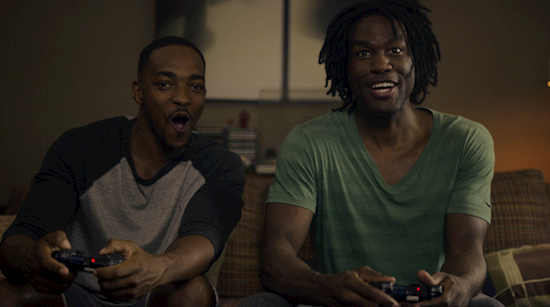Black Mirror Season 5 Is Surprisingly Optimistic About Technology
This article contains spoilers for Black Mirror through season 5.
Binging Black Mirrorfrom the beginning can be dangerous for your emotional health. Anyone who has done this with the first two seasons knows this is true. You can’t watch the pig sex in “The National Anthem,” Jodi Whitaker commit adultery in “The Entire History of You,” and then, Jessica Brown Findlay get brainwashed in “Fifteen Million Merits” without starting to dread the pervasiveness of certain societal and technological trends. And yet, something has happened to Black Mirror since that first season. At some point, the darkest sci-fi show of them all, actually became… optimistic?
The pseudo-minimalism of Black Mirror season 5 might, at a glance, seem like a return to form. Like season 1, there are only three episodes, two stories with high-concept sci-fi plot devices that cause chaos in people’s lives (“Striking Vipers and “Rachel, Jack and Ashley Too”) and one story that is deceptively light on sci-fi (“Smithereens”), but is also shaming us about being on our damn phones all the time. And yet, nearly every single one of these episodes presents an optimistic use of technology; a sense that these stories aren’t simply finger-wagging cautionary tales, but in fact, mix optimism about the future with narrative conflict in original ways.
True, a one-note reading might be possible of an episode like “Smithereens,” and that reading might be: social media alerts on your phones are terrible. And yet, just like in the season 3 episode “Hated in the Nation,” a police investigation is actually helped by the wide-spread domination of an annoying social media company. Sure, the idea of being addicted to our technology is floated in almost every single Black Mirror episode ever, but in “Striking Vipers,” late-night video game addiction eventually results in a complex solution to a problem in contemporary marriage; a polyamorous “sex pass” becomes a kind of happy ending for two old friends, struggling to express themselves through a video game.
Further Reading: Black Mirror Shared Universe Confirmed
And then there’s the Miley Cyrus episode: an episode in which all the good guys win because a pop star’s personality was mapped-onto a creepy talking robot-doll. Sure, the idea of an evil music corporation drugging a pop star in a coma, and then trying to extract pop songs from her mind is really dark, but the the much-earned and literal deus ex machina in this story is very pro-robot brain. Without the entire personality of Ashley contained in the robot-doll Ashley Too, the real human pop star could not be saved from certain death. The various characters’ personal inhibitions are similarly unshackled because of this robot. In other words, if season 1 of Black Mirror felt like a realistic cyberpunk version of Terminator 3: Rise of the Machines, the newer iterations of the show feel closer to a less-goofy Doctor Who. Sure, there’s some dark speculation on technology, but not all of it is dystopian or bleak.
This trend was actually well underway before season 5, too. Everyone’s favorite episode of Black Mirror season 3 — “San Junipero” — concludes with Yorkie and Kelly’s minds being uploaded into a data cloud, forever, which allows their romance to continue, despite the fact they are dying. Clearly, the VR tech that is similar to what we see USS Callister, actually helps people in this case. This is also true of the season 4 episode, “Hang the DJ,” in which an A.I dating app clearly seems to be bringing the right people together when it comes to matters of the heart.
Even darker episodes like “USS Callister,” actually contain a glimmer of hope at the end. Though tortured by their creator, the digital clones living inside of the huge MMOG are given autonomy at the end of the episode, something that certainly never really happened to all the enslaved holograms on Star Trek: Voyager. Even the critique of social media in “Nosedive,” presents a kind of roundabout silver-lining; had Bryce Dallas-Howard’s character not gone on that superficial journey, she may have never found herself in the end. So, in a sense, that character needed the oppressive technology to allow herself to see the error of her ways.
further reading: Why Black Mirror's Smithereens is Actually Hard Science Fiction
Obviously, all of these interpretations of individual Black Mirror episodes are just that; interpretations. But, because there are more episodes with “happy endings” lately than episodes where politicians are screwing animals on TV, it’s hard to paint Black Mirror with one color at this point.
It’s not like the reason why this show is popular is just because everyone is nodding and sighing and bitching about the state of the world while watching the episodes. There are a variety of meanings in the best stories; and those meanings can spark good conversations. The titular Black Mirror may be cracked, but it doesn’t just reflect despair. There’s hope there, too.
More on Black Mirror Season 5: "Striking Vipers" review | "Rachel, Jack, and Ashley Too" review | "Smithereens" review
Source: www.denofgeek.com

